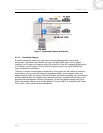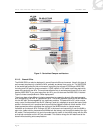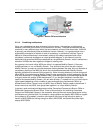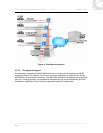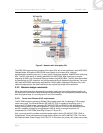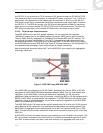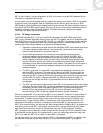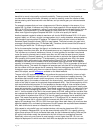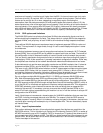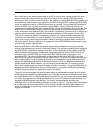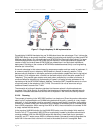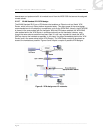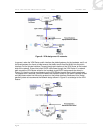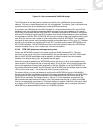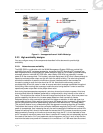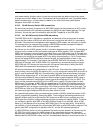
Voice over Wireless LAN Solution Guide v1.0 December 2005
______________________________________________________________________________________________________
Page 20
maximum call capacity is not that much higher than the 802.11b channel reuse case (only up to
four times as much). By contrast, 802.11a offers a much greater channel space. Channel reuse
factors can be as high as 12 or more, depending on regulatory region. Borrowing the
assumptions from the previous example (50 mW transmit power and channel reuse of 12), the
same scenario has none of the same caps on call capacity. Each shrinking of cell radius results in
extra call density. Even spacing APs 66 ft apart (33 ft radius) yields more call density compared
with a 50 ft cell radius. At 33 ft radius, call capacity for 802.11a reaches as much as 5 to 10 times
that of 802.11b. Note that in non-channel reuse scenarios, capacity is substantially higher.
2.2.2.4 SSID options and limitations
The WLAN 2300 series has a feature that allows VLANs to be extended to clients over the air
while maintaining the separation of clients. This allows clients in a single SSID to be mapped to
separate VLANs, and yet privacy of each VLAN is still maintained through separate broadcast
keys.
The traditional WLAN deployment requirement was to implement separate SSIDs for voice and
for data. This requirement no longer exists, though it is still a useful deployment option in some
circumstances.
If all devices implement common security encryption mechanisms (for example, Wi-Fi Protected
Access [WPA]), then a single SSID can be offered to support both voice and data. The benefit of
this configuration is that it removes the ability of users to control to which network they connect.
This is a security mechanism that prevents curious or malicious users from putting their laptop in
the telephony VLAN. At the same time, it prevents inadvertent configuration mistakes. Either way,
the simplified user interface to the network benefits both network administrators and end users.
If data devices do not use the same encryption mechanism as WLAN handsets, then it is best to
implement multiple SSIDs—one for WLAN 221x Handsets and the other for the data devices.
This issue is not a WLAN 2300 series limitation as the AP does support multiple encryption types
on the same SSID. Rather, this is a common issue among 802.11 clients, in which a client is
confused by the beacon information indicating a different group (broadcast) key type from unicast
key type. Some but not all clients support the multiple encryption type environment.
Do not configure multiple WLAN Handset 2210/11/12 SSIDs on the same WLAN 2300 series
APs. Note that separate handset SSIDs on different sets of APs, or one handset SSID and
another non-handset SSID on the same APs are still valid configurations. The reason is that the
AP 2330 supports multiple SSIDs through multiple Basic Service Set Identifiers (BSSID), which is
to say that the AP is virtualized and appears to clients as multiple separate APs. This causes the
WTM 2245 admission control features to assume the calls are taking place on separate APs
instead of the same AP. If necessary, one way to ensure that multiple handset SSIDs on the
same AP still work without oversubscribing the medium is to cut in half the number of calls per AP
configured on the WTM 2245.
Lastly, Nortel does not recommend a closed system for VoWLAN installations that use more than
one SSID, including converged data and voice WLANs. The reason is that the SSID serves a
valuable purpose in roaming. When it is hidden by not being included in the beacon, devices have
no choice when roaming but to attempt to try all closed system APs. This can dramatically impact
call handoff times.
2.2.2.5 Layer 3 implementation
This section addresses the topic of how subnets that support client devices are overlaid on the
WSS 2300 solution. This is not referring to Control and Provisioning Protocol (CAPP) or modes of
AP/WSS connectivity over a L2/L3 network. CAPP is inherently an L3 protocol that extends an L2
environment from the AP back to a WSS. The WSS can further extend that L2 environment to yet
another WSS. But to which WSS and to which subnet does that L2 environment ultimately map?
That is the subject of this section.



